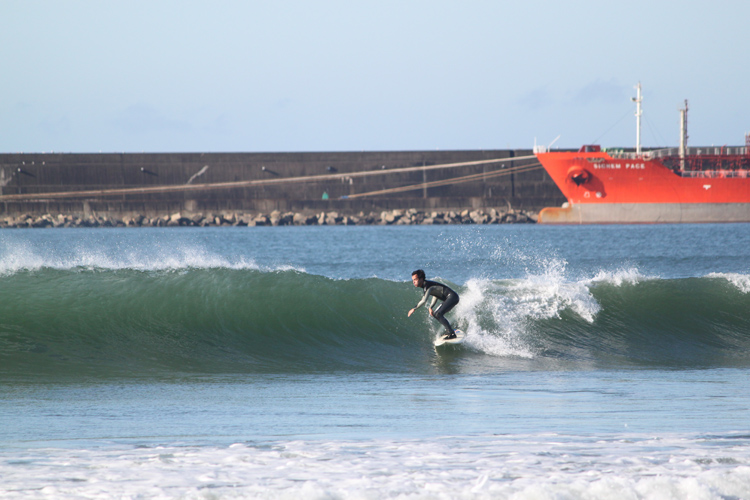Portugal enjoys a Mediterranean climate and is one of the warmest countries in Europe, with 2500 to 3200 hours of sunshine a year.
The annual average temperature in mainland Portugal varies from 13 °C (55.4 °F) to over 18 °C (64.4 °F). The north is colder; the south is warmer.
The islands of Madeira and Azores are located in the Atlantic Ocean and are sanctuaries of world-class waves.
Portugal is one of the best world countries for surfing with 1,793 kilometers of coastline, where almost every beach delivers quality waves.
The best surf spots are Aguçadoura, Cabedelo de Viana, Moledo, Mindelo, Leça da Palmeira, Matosinhos, Espinho, Cortegaça, Nazaré, Buarcos, Figueira da Foz and Furadouro, in the north of Portugal.
In the south, look for São Pedro de Moel, Baleal, Supertubos, Santa Cruz, Ericeira, Ribeira d'Ilhas, Coxos, Praia Grande, Carcavelos, Guincho, Costa de Caparica, São Torpes, Praia do Amado, Amoreira, Arrifana, Beliche, Tonel, Zavial and Meia Praia.
In the Azores Islands, check Praia da Vitória, Porto Martins, Santa Catarina, Caldeira, Fajã dos Cubres, Areias, Populo and Ribeira Grande.
Finally, in the Madeira island, try Jardim do Mar, Porto da Cruz, São Vicente and Machico.
Take an in-depth look at the best surf spots in Portugal.
